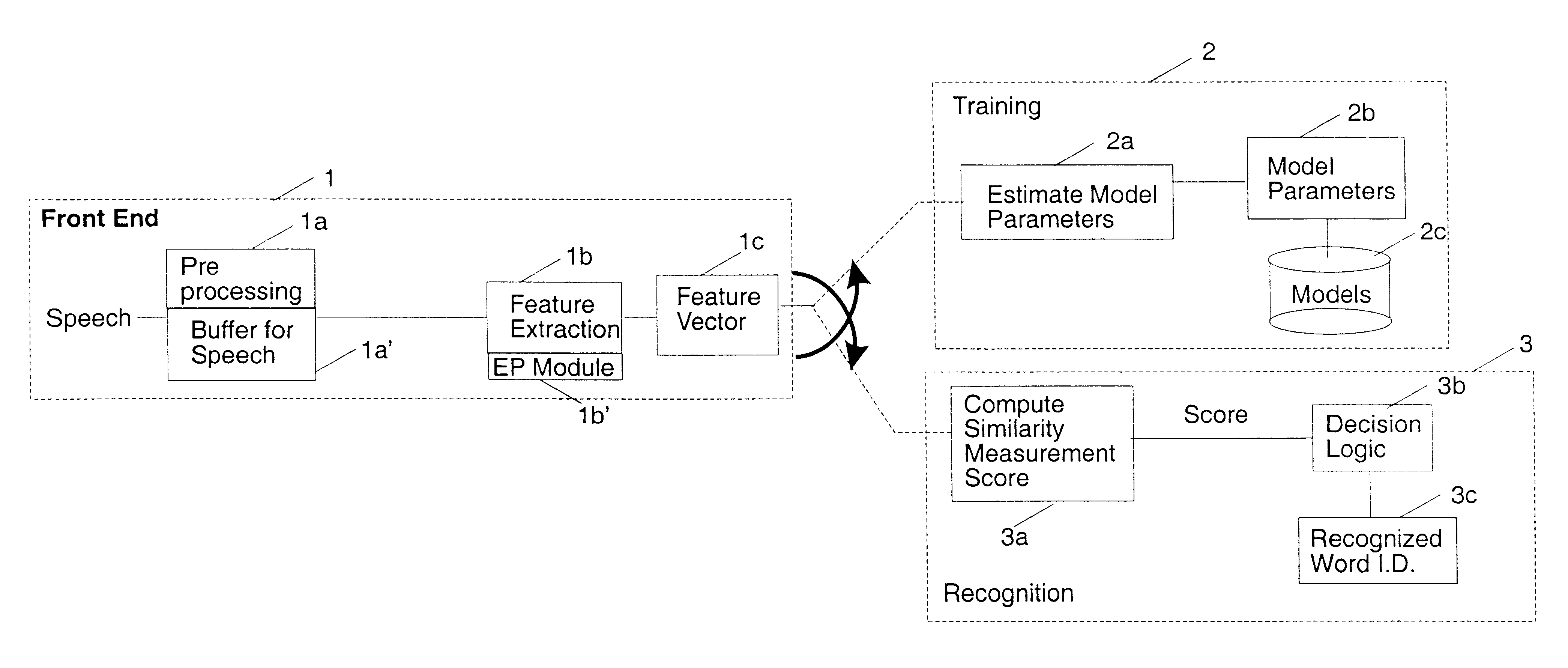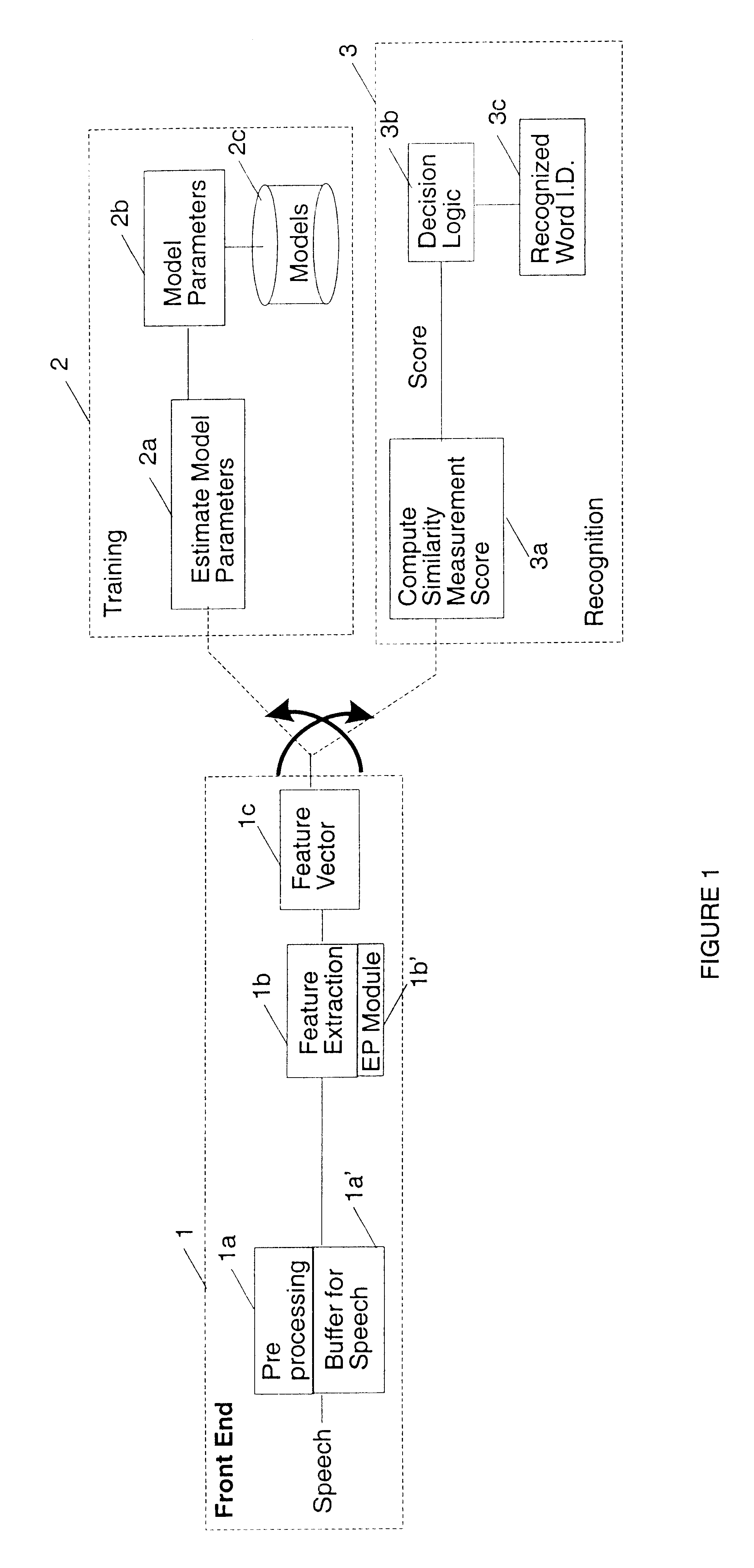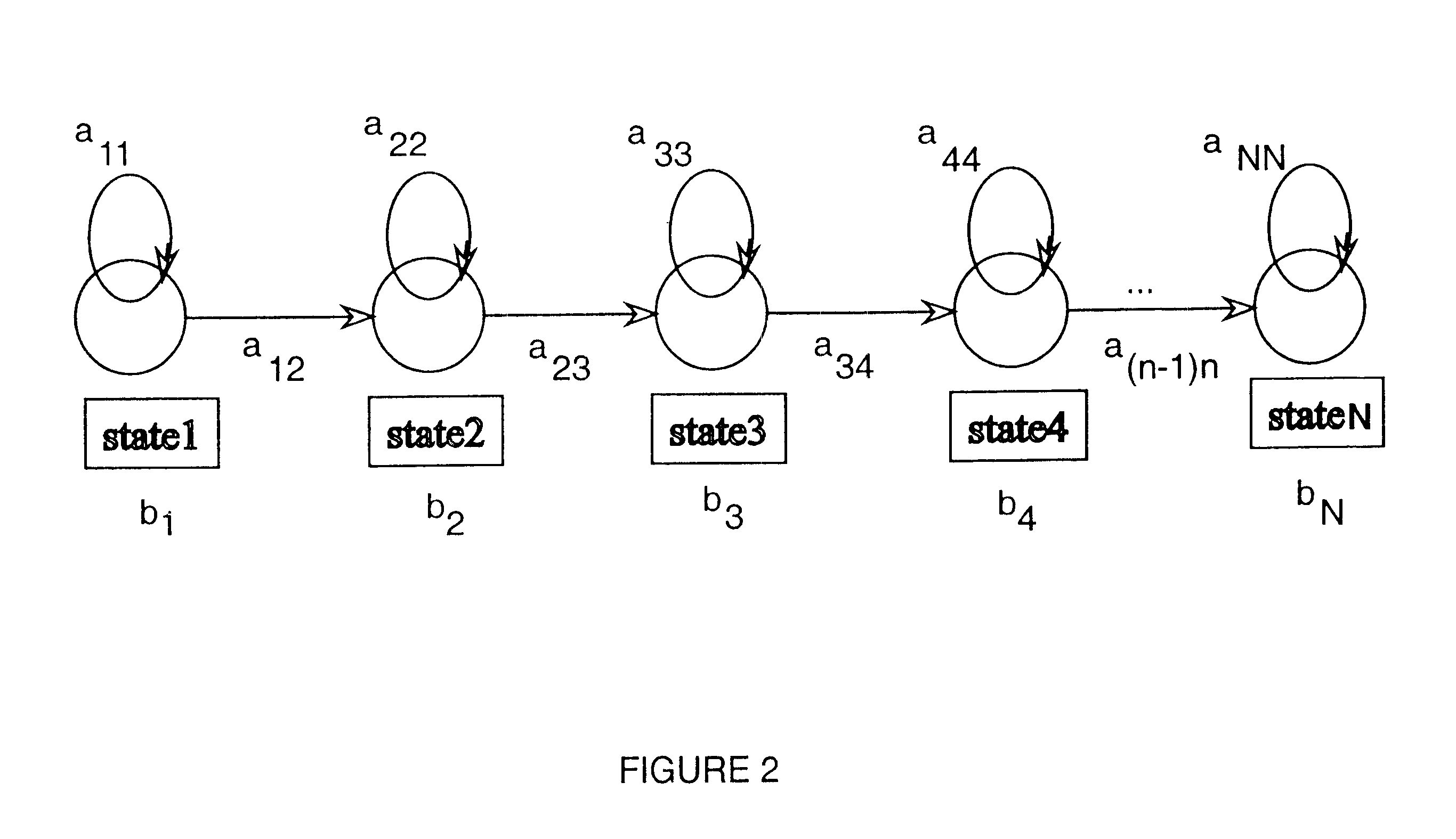Smart training and smart scoring in SD speech recognition system with user defined vocabulary
a speech recognition and user-defined vocabulary technology, applied in speech analysis, speech recognition, instruments, etc., can solve problems such as acoustical similarity of vocabulary words, allowing a user-defined vocabulary to introduce problems, and performance degradation if not implemented properly
- Summary
- Abstract
- Description
- Claims
- Application Information
AI Technical Summary
Problems solved by technology
Method used
Image
Examples
Embodiment Construction
As noted above, the present invention uses a statistical approach known as Hidden Markov Modeling (HMM). In such a statistical approach, it is assumed that the speech signal can be characterized by a random process in the given feature space which in this case is the spectral domain or space of cepstral vectors.
Training is process of estimating all of the parameters describing this random process for each word in the vocabulary and the recognition or matching process can be viewed as identifying which of these random process is most likely to produce the test token to be recognized. A probabilistic measure is used to determine this closeness.
The representation of speech by a concise set of parameters is the most crucial step of the speech recognition process and the representation of speech by a such parameters in the present invention is achieved using Linear Prediction Coding (LPC) and is well known to those skilled in the art. The Hidden Markov Model (HMM) or Source is capable of...
PUM
 Login to View More
Login to View More Abstract
Description
Claims
Application Information
 Login to View More
Login to View More - R&D
- Intellectual Property
- Life Sciences
- Materials
- Tech Scout
- Unparalleled Data Quality
- Higher Quality Content
- 60% Fewer Hallucinations
Browse by: Latest US Patents, China's latest patents, Technical Efficacy Thesaurus, Application Domain, Technology Topic, Popular Technical Reports.
© 2025 PatSnap. All rights reserved.Legal|Privacy policy|Modern Slavery Act Transparency Statement|Sitemap|About US| Contact US: help@patsnap.com



